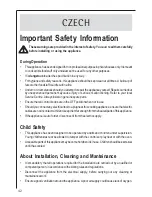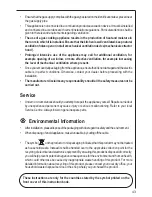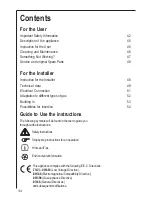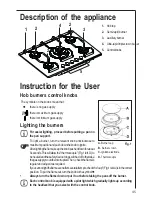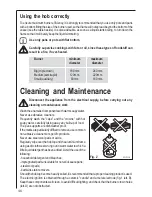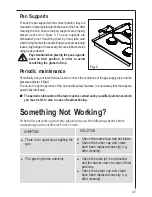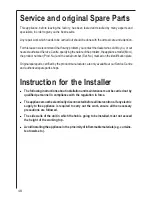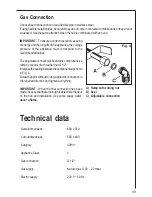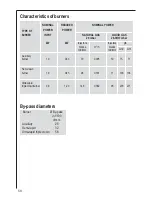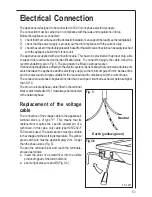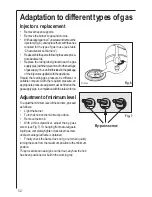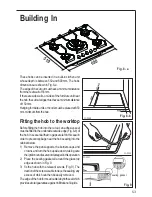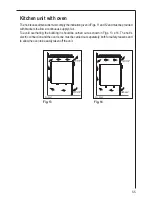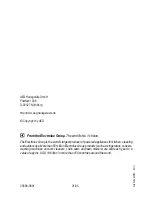
46
Fig. 2
FO 2110
Using the hob correctly
To ensure maximum burner efficiency, it is strongly recommended that you use only pots and pans
with a bottom fitting the size of the burner used, so that flame will not spread beyond the bottom of the
vessel (see the table beside). It is also advisable, as soon as a liquid starts boiling, to turn down the
flame so that it will barely keep the liquid simmering.
Use only pans or pots with flat bottom.
Carefully supervise cookings with fats or oil, since these types of foodstuff can
result in a fire, if over-heated.
Burner
minimum
maximum
diameter
diameter
Big (triple crown)
160 mm.
240 mm.
Medium (semirapid)
120 mm.
220 mm.
Small (auxiliary)
80 mm.
160 mm.
Disconnect the appliance from the electrical supply, before carrying out any
cleaning or manteinance work.
Wash the enamelled components with warm soapy water.
Never use abrasive cleaners.
Frequently wash the "caps" and the "crowns" with hot
soapy water, carefully taking away any built-up of food.
The pan supports are dishwasher proof.
If the marks are particularly difficult to remove, use common
non-abrasive cleaners or specific products.
Never use steel wool pads or acids.
Regularly wipe over the hob top and the aluminium frame
using a soft cloth weel wrung out in warm water to which a
little liquid detergent has been added. Avoid the use of the
following:
- household detergent and bleaches;
- impregnated pads unsuitable for non-stick saucepans;
- steel wool pads;
- bath/sink stain removers.
Should the hob top become heavily soiled, it is recommended that a proper cleaning product is used.
The electric ignition is obtained through a ceramic "candle" and a metal electrode (fig. 1 lett. B).
Keep these components well clean, to avoid difficult lighting, and check that the burner crown holes
(lett. A) are not obstructed.
Cleaning and Maintenance


